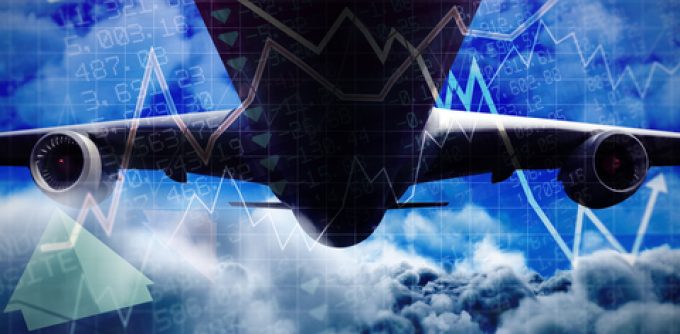Container spot rates have peaked as all major trades see prices fall
There was more evidence in this week’s container port freight markets that peak prices on ...
TFII: SOLID AS USUALMAERSK: WEAKENINGF: FALLING OFF A CLIFFAAPL: 'BOTTLENECK IN MAINLAND CHINA'AAPL: CHINA TRENDSDHL: GROWTH CAPEXR: ANOTHER SOLID DELIVERYMFT: HERE COMES THE FALLDSV: LOOK AT SCHENKER PERFORMANCEUPS: A WAVE OF DOWNGRADES DSV: BARGAIN BINKNX: EARNINGS OUTODFL: RISING AND FALLING AND THEN RISING
TFII: SOLID AS USUALMAERSK: WEAKENINGF: FALLING OFF A CLIFFAAPL: 'BOTTLENECK IN MAINLAND CHINA'AAPL: CHINA TRENDSDHL: GROWTH CAPEXR: ANOTHER SOLID DELIVERYMFT: HERE COMES THE FALLDSV: LOOK AT SCHENKER PERFORMANCEUPS: A WAVE OF DOWNGRADES DSV: BARGAIN BINKNX: EARNINGS OUTODFL: RISING AND FALLING AND THEN RISING

The air cargo industry should expect a non-existent, or at best muted, peak season as rates and volumes continue to slide.
September saw rates drop 19% year on year out of Hong Kong to North America, while out of Shanghai they fell 42%, according to the TAC Index.
On Asia to Europe, rates fell 25% from Shanghai and were flat from Hong Kong, but all lanes are still significantly – between 92% and 175% – above pre-Covid levels.
World ACD, meanwhile, reported lower volumes, with chargeable weight down 12% year on year in weeks 38 and 39, with volumes ex-Asia Pacific 20% below and North America-origin tonnages 12% down.
It said: “Volumes show signs of a continued weakening trend, with no clear signs yet of a fourth-quarter peak season.”
And Stifel director Bruce Chan, director global logistics, told the Baltic Exchange: “Ultimately, we expect these trends to continue.
“Given more inventory in the system, more fluidity in the supply chain, less residual boost from fiscal and stimulus policy and uncertainty over the direction of the global economy, we do not believe there will be much of a peak.”
But he added: “That said, we believe pricing is likely to remain structurally higher than pre-pandemic levels for some time.” And he cited geopolitical instability and economic uncertainty, as well as residual volatility and imbalanced supply chains as factors.
“Rapid downswings in volumes and pricing are certainly within the realm of possibility.
“But there is also a possibility of a rapid upswing and late season spike, if inventories bleed down sufficiently and consumer demand remains more resilient than consensus currently suggests.”
Others agree. Marco Bloemen, head of Accenture’s Seabury Cargo, said at last month’s IATA WCS in London: “Last year was stellar – this year won’t be as good.”
Pointing to flat growth year-to-date and a significant decline in July, he also noted that the demand-to-capacity ratio was increasing, adding: “Business is volatile, but yields are still 2.5 times what they were.”
However, there are regional differences. Demand and supply on the transatlantic are back to pre-Covid levels. Mr Bloemen said: “US air trade has plateaued after the largest surge in a decade. It accounts for 40% of global air trade, so it is really relevant.
“US inventories are outpacing sales and limiting the expected growth of air imports in the short term. But despite the recent year-on-year decline, US air imports are still on track to equal 2021.”
And like Stifel, Mr Bloemen said he thought “disruption” was here to stay, citing Russian airspace closures, typhoons and lockdowns among other issues. He predicted that the fourth quarter would show air trade levels somewhere between Q4 18 and Q4 19.
“Long-term indications suggest continued growth. In the short term – caution. There are significant headwinds.”
Meanwhile, IATA chief economist Marie Owens Thomsen said GDP was “not great, but not awful”, and added: “The world economy tends to be quite resilient, but there is a steady decline in the growth rate of the global economy. Emerging markets are going to bear the brunt of what is thrown at us.”
She added: “Air cargo rates remain competitive with container rates. That is still supporting air cargo, but will wane in 2023. Air cargo exaggerates movements in world trade – the container trade more closely aligns with it.”
She also pointed to China, which has contributed about 30% of GDP growth in the past two decades, as the biggest risk to both the global economy and air cargo.
Comment on this article